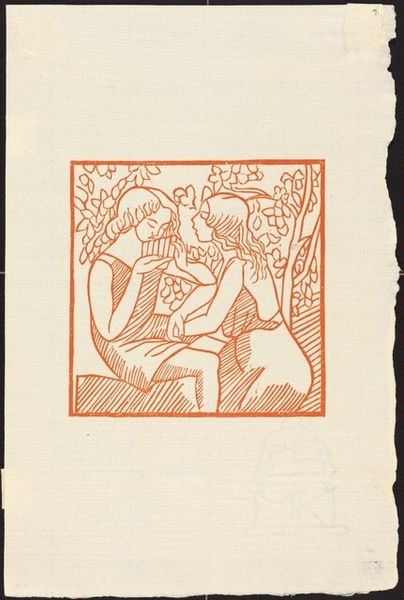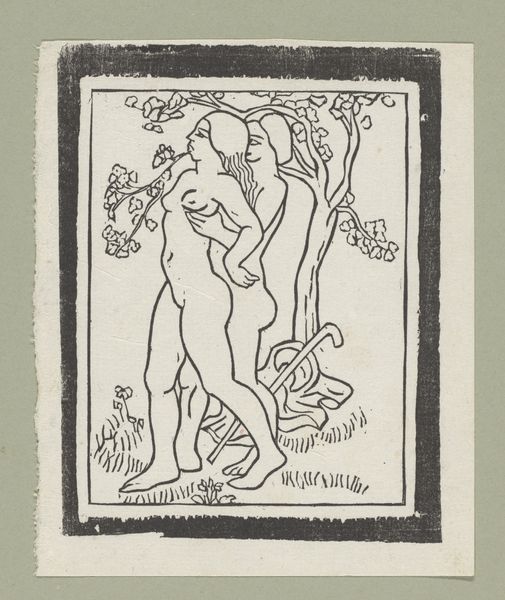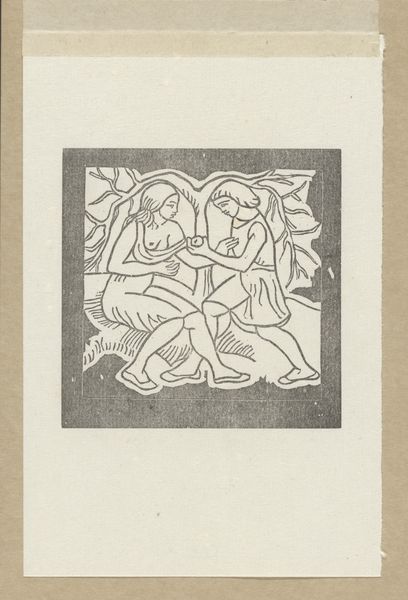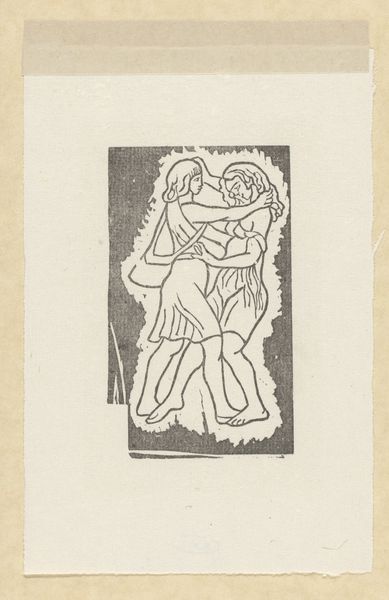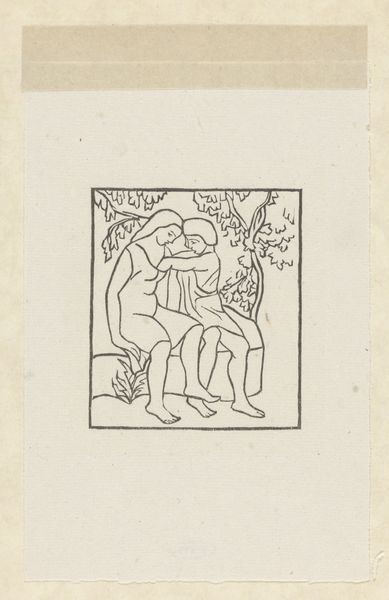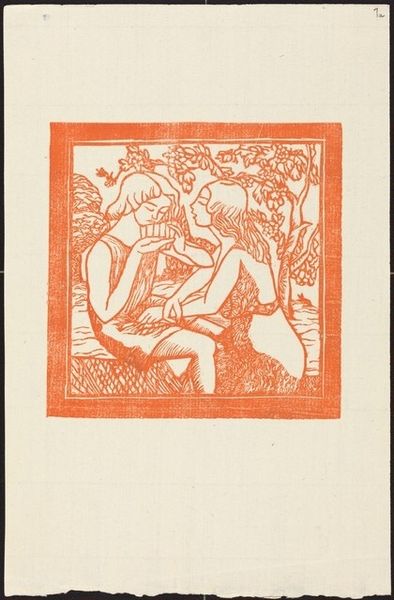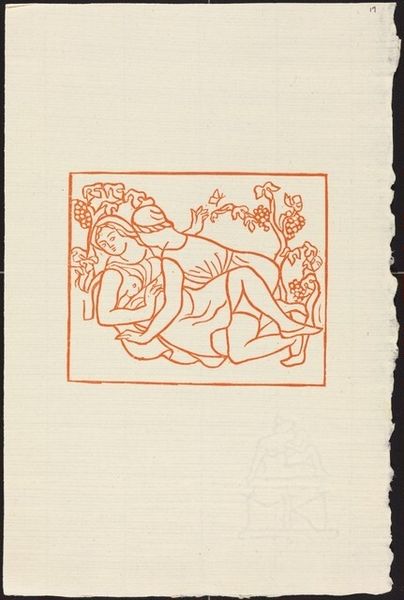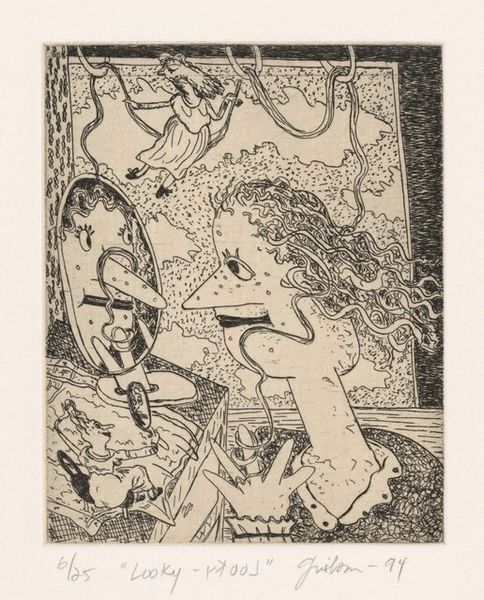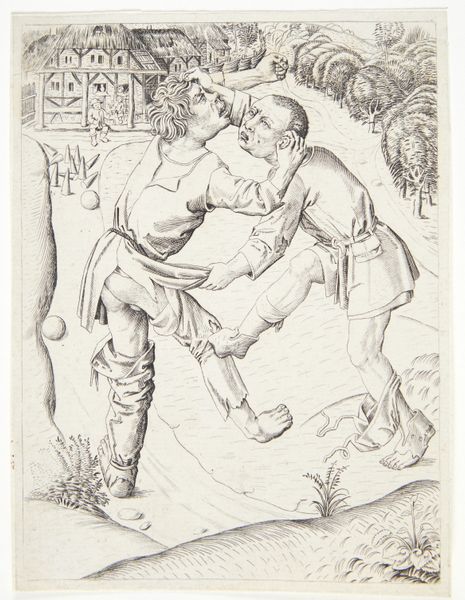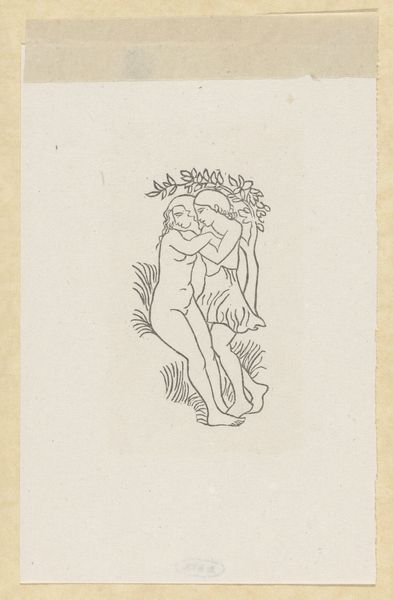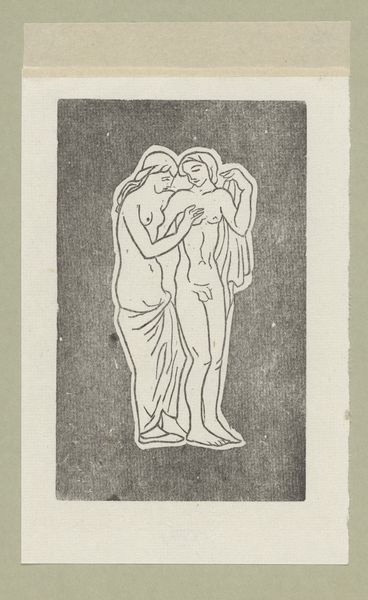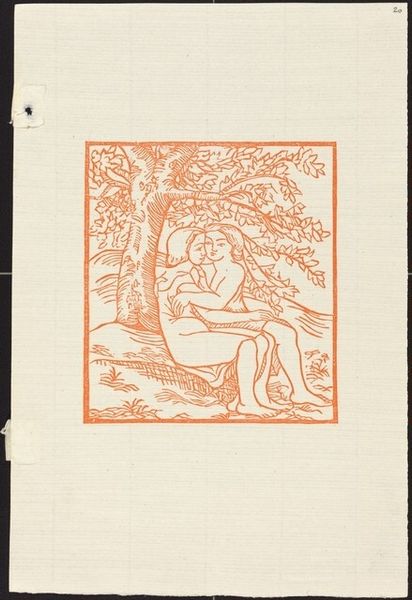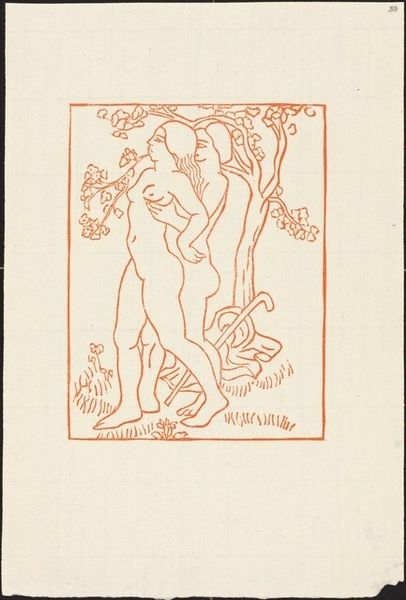
drawing, print, ink
#
drawing
#
narrative-art
#
comic strip
# print
#
traditional media
#
figuration
#
ink
#
line
Dimensions: height 193 mm, width 129 mm, width 258 mm
Copyright: Rijks Museum: Open Domain
Editor: Here we have Aristide Maillol's 1937 ink drawing, "Daphnis speelt panfluit voor Chloé," which translates to "Daphnis plays pan flute for Chloe." The line work feels so clean and classical, but it's the placement within the book page that makes it striking. How do you interpret its historical and cultural context? Curator: The placement is key, isn't it? This drawing, meant as an illustration, participated in the long tradition of artists engaging with literary classics. Consider the historical moment – 1937. While modernism raged, here's Maillol, looking back to pastoral myth. Does that suggest anything about the public's taste and artistic patronage at the time? Were they seeking solace in simpler narratives, amidst growing political unease? Editor: So, it’s a retreat from modernity? Curator: Perhaps, but not simply. The classical style carries cultural weight. Maillol isn't just illustrating a story; he's invoking a visual language of power, beauty, and perhaps even a kind of idealized European identity. Think about who had access to these illustrated books and the messages they received. Editor: That makes sense. The act of reinterpreting the Classics for a contemporary audience does add a new layer of meaning in how the artist appropriates and represents imagery that can be read as power structures. Now, thinking about that more, it is even more evident in the themes this narrative presents. Curator: Precisely! The political and the aesthetic intertwine. What seems like a simple pastoral scene carries layers of meaning about cultural values and access. Editor: It’s interesting how looking at something through a historical lens can completely transform how you understand it.
Comments
No comments
Be the first to comment and join the conversation on the ultimate creative platform.
